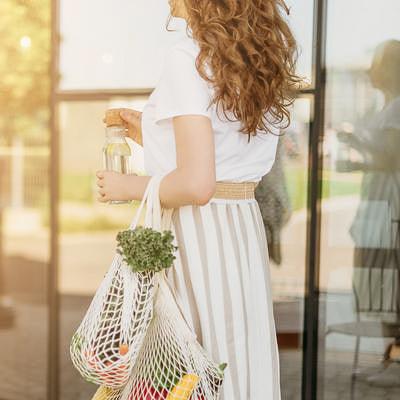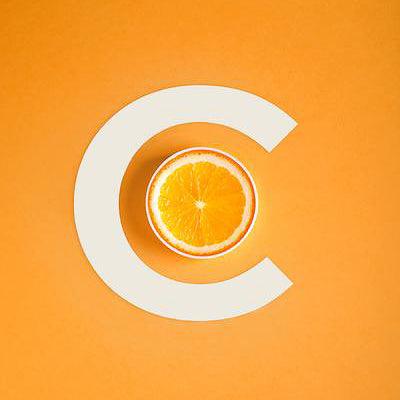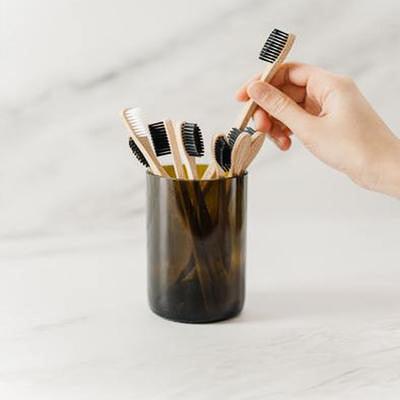Every one of us has wanted to save the world like the superheroes we watched on television when growing up. We then dismissed the idea as impossible and improbable. Perhaps it’s time to revisit this lofty ideal because each of us, in our own way, can contribute to saving the world by becoming more aware of how we use plastic.
An imperfect push to reduce plastic usage is better than not doing anything at all. And, of course, the more of us that push for a plastic-free world, the more significant the change will be.
As Anne Marie Bonneau, who runs the blog, The Zero Waste Chef explains, "We don’t need a handful of people doing zero waste perfectly. We need millions of people doing it imperfectly."

So Why Do We Need to Save the World From Plastic Anyway?
Human ingenuity has devised innumerable ways to use plastic:
- Manufacturers use plastic for packaging — for instance, wrapping deodorant sticks in plastic shells.
- Retailers use plastic bags to bundle up customer purchases.
- Restaurants serve up drinks with plastic straws.
Unfortunately, this ubiquitous use of plastic results in the accumulation of plastic waste. Since not all of this waste is properly disposed of, it ends up as plastic pollution.
Despite such measures as initiating plastic bag bans and trying to limit single-use plastics, environmental agencies have only had limited success in reducing the widespread production of plastic waste and careless disposal of single-use plastic products.
In this article, we will talk about initiatives like plastic bag bans and plastic-free July as well as other ways to reduce the widespread use of packaging everything with plastic.
What Is Plastic-Free?
Vanuatu, a South Pacific nation comprising about 80 islands and stretching a mere 808 miles, serves as a real model of what happens when a country intends to go plastic-free.
On the 30th of July 2017, Vanuatu’s Independence Day, the country reduced single-use plastic to restore their ocean back to its pristine beauty. They have made progress in banning Styrofoam food containers, plastic drinking straws, and single-use plastic bags. As progress continues, the Prime Minister of this Pacific Island nation continues to add to the list of banned single-use items. They have unintentionally modeled their plastic-free living ideals of the Plastic-Free July Challenge.
One plausible reason many developed nations are slow in pushing for a plastic ban is that it is not clear whether plastic is good or bad. It is also difficult to police an entire population that does not recycle plastic properly. However, in some countries, like Kenya, draconian measures resulted in an estimated 80% of the population discontinuing the use of single-use plastic. According to a BBC world news report, “Anyone found manufacturing, importing or selling a plastic carrier bag could be fined up to $40,000 (£32,000) or face a prison sentence of up to four years. Using the banned bags carries a fine of more than $500 or a jail term of up to a year.”
While Vanuatu determined plastic was bad because it was polluting the ocean surrounding them, other nations consider plastic such a reliable and inexpensive material that it is difficult to decide whether plastic is good or bad. For instance, in the health sector, plastic is more hygienic than other materials and an effective way of preventing infection. So the health industry uses it for protective gloves, catheters, and valves. In fact, it is even possible to argue that plastic saves lives. Conversely, plastic waste is also clearly bad, slowly polluting the world, harming wildlife on land, and destroying marine life in rivers, lakes, and oceans.
Still, trying to go to zero waste is a noble ideal and there are many ways to do this effectively.
Consumers can refuse to accept plastic packaging or single-use plastic items from retailers. Everyone can use plastic more responsibly, reusing it several times, perhaps even for months and years, rather than only using it once. For instance, we can reuse plastic bottles and reuse plastic shopping bags for a long time.
While it’s reasonable to say that plastic plays a useful role in healthcare and serves many practical functions in everyday life, we use far more plastic than necessary.
Often, too, it is not possible to identify what is plastic-free, and what is a petroleum-based plastic product? For instance, it would appall most consumers to learn that when they chew gum, they are not chewing natural rubber, but chewing plastic. After the Second World War, when chemists learned how to create synthetic rubber, manufacturers realized that it was more cost-effective to make chewing gum out of synthetic rubber. They correctly guessed that consumers could not tell the difference.
While some plastic-free alternatives are available for consumers such as asking for paper bags instead of plastic, many plastic items are used in everyday life because of their convenience. For instance, marathon runners who need bottled water require lightweight plastic bottles. Busy cafeterias serving hundreds of people a day rely on disposable plastics, such as utensils and containers like plates and glasses.
Sometimes, it almost seems as if we can’t help leaving a plastic footprint regardless of our best intentions.

Why Plastic-Free
When we first hear about becoming plastic-free, learning about how much damage plastic waste is causing, we often feel guilty for our own role in contributing to this chaotic situation. In our enthusiasm for change, we might participate in the Plastic Free July challenge, and resolve to have nothing to do with plastic ever again and only buy plastic-free products. While this is a noble ideal, it is neither practical nor rational.
Plastic has become an integral part of modern life.
For example:
- Our homes are not plastic-free. Plastic products play a pivotal role in enhancing the functionality of our home. For instance, we may use kitchen and bathroom benches and use gutters and rainwater tanks made of plastic. Even our doors and windows often have some plastic in them.
- Our essential communication devices and accessories, such as desktops, laptops, smartphones, tablets, plugs, chargers, and electrical wires, use plastic.
- Our medical devices — from catheters to pill bottles — use plastic because this is one of the most easily available hygienic materials. In fact, even pacemakers, made of biocompatible materials like titanium, use polyurethane polymers for insulation, and polyurethane is a plastic substance.
- Consumables like laundry detergent, beauty products, and personal care products are typically packaged in at least one layer of plastic.
- Our online purchases are often shipped to us in plastic packaging, and although many eco-conscious retailers may use recycled plastic, it could still end up as plastic waste.
While the question, “Why plastic-free?” is easy to answer—because waste material is causing a plastic pollution crisis—it’s difficult to know where to begin to combat this problem.
So within the bounds of common sense, we should go plastic-free as much as possible because it will save our ecosystem from suffocating in plastic. We should strive to limit single-use plastic products if there are alternatives available, and many times this is just a matter of knowing where to look for them. In the long run, a collective push to consume fewer plastic products, such as reducing the use of plastic grocery bags and plastic water bottles will reduce the accumulation of plastic waste.

How to Go Plastic-Free
It's not an overstatement to say that once modern society can figure out how to go plastic-free, it will change the world for the better, perhaps even saving it.
According to a BBC news story about the perils of our prodigious use of single-use plastics, Will there be more fish or plastic in the sea in 2050? “The Ellen MacArthur Foundation’s updated figure for fish in the sea in 2050 is roughly 899 million tonnes. But it also increases its estimate for the amount of plastic in the ocean in 2050 to between 850 million and 950 million tonnes, or about 25% more than originally predicted.”
Although it may not be possible to reduce all plastic because it plays a vital role in major industries, such as healthcare, electronics and construction, to name just a few, it is theoretically possible to reduce single-use plastic items that are the primary source of plastic pollution.
Here are some ways that we could do it:
- We could replace plastic water bottles and cups with glass.
- We could replace plastic grocery bags and produce bags with biodegradable organic cotton cloth bags.
- We could replace plastic containers with stainless steel reusable containers.
-
We could replace plastic toothbrushes with bamboo toothbrushes from a zero waste store.
- We could buy toothpaste tablets in glass jars instead of plastic tubes.
- Personal care products like shampoo can be replaced with shampoo bars that disintegrate into nothing as you use them.
- We could reduce our plastic consumption, buying fewer plastic products, like straws, plastic wrap, containers, and water bottles.
- We could change our purchasing strategies — buying in bulk to reduce the amount of packaging waste.
- We could stop voting with our money for single-use plastic items by learning where to shop plastic-free. This will encourage service businesses to stop dispensing plastic to their customers — for example, offering reusable bags at grocery stores and bamboo utensils at restaurants.
Taking these measures will make it easier to avoid using plastic, encouraging collective awareness about the growing threat of plastic pollution. By setting an example and speaking up about the value of a plastic-free world, we can start to make the shift from being part of the problem to being part of the solution.
Incidentally, going plastic-free is not about depriving ourselves of convenient consumer goods because many things we assume can only be made out of plastic can also be made out of other materials. For instance, bee's wrap can be substituted for cling wrap.
Another proactive step is to take part in Plastic-Free July, which is a global movement to raise awareness about plastic pollution. The movement promotes the value of community responsibility in creating cleaner streets and less polluted oceans by bringing plastic-free packaging to the forefront of people's consciousness.

Bamboo as an Alternative
Can you use bamboo as an alternative to plastic? In many cases, yes. Plenty of single-use plastic items in our homes, such as plates, cutlery, and straws could be made out of bamboo fiber.
Bamboo fiber works well because it is versatile enough to be used in many ways, durable enough for nearly unlimited usage, and cheap enough for mass production. Also, bamboo products are completely biodegradable, unlike plastic, which scientists estimate can last for a thousand years in a standard landfill.
Bamboo is an eco friendly alternative to plastic because the plant is classified as a grass. After the it is established, which can take as long as three years, growing bamboo is easy. This is because it not only grows profusely, but it also grows as much as four feet in a single day. This fast-growing grass does not need any fertilizers, pesticides, or herbicides. Also, since it regenerates itself from its roots, bamboo growers don't need to continue to replant it.
In fact, compare the ease of growing bamboo to a historically popular commercial plant like cotton, which needs a lot of care and attention to flourish. Cotton requires plenty of water and human labor and about $2 billion dollar’s worth of pesticides each year. You can clearly see why a bamboo forest would cost less than a cotton field over the course of it's lifetime.
Bamboo has many commercial uses for eco friendly products, such as bamboo straws and bamboo fabric. It is strong enough for use as a building material but it can also be softened to make paper products, such as bamboo paper towels and toilet paper. In fact, it’s astonishing the range of bamboo products now available for consumers, such as organic bar soaps and bedding.
Finally, since the bamboo plant is an organic fiber, it makes good compost, provided we shred it before putting it in a compost bin. We can compost every part of the bamboo — the leaves, the stems, and even products made from it.
Change Starts With Us
We have to be the change we wish to see in the world.
While Vanuatu is leading the charge for a plastic-free future, it has not banned all plastic, only some single-use plastics. Other countries striving to become plastic-free include Kenya, Zimbabwe, the United Kingdom, Taiwan, and Australia.
Some cities, too, such as Seattle, Washington and Hamburg, Germany, are also focusing on reducing single-use plastic.
Still, no country or city is yet entirely plastic-free because this is a journey that will take some time. Meanwhile, as nations and cities struggle to reduce plastic waste, we have to do our part as consumers by using plastic alternatives like bamboo and searching for the best plastic-free items in our zero waste shop.




